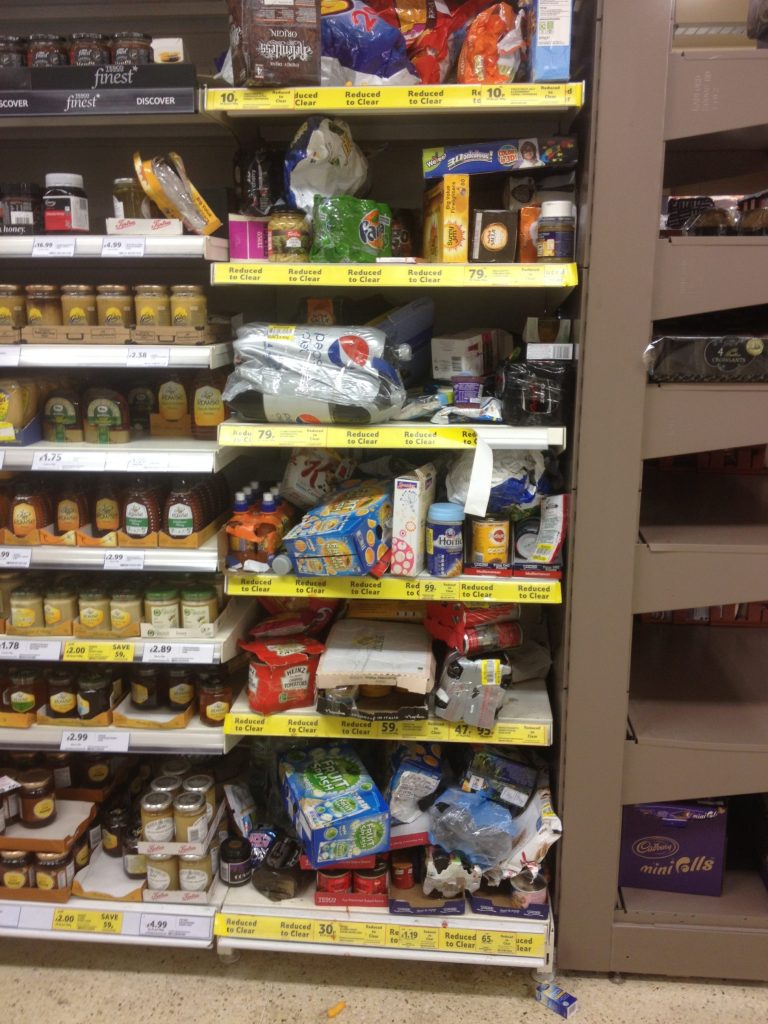The 12 days of Dave Lewis – No.6 – Hours

Steve Dresser
Founder of Grocery Insight & retail influencer
"The man supermarket CEO's turn to" - BBC"

Without trying to ensure the Grocery Insight blog becomes somewhat of a tragic obsession of writing solely about Dave Lewis and Tesco, they are extremely newsworthy at the minute, and part of the wider Grocery Insight service offering is all about monitoring the market, spotting trends and activity in the shops. There’s plenty to look and consider with the Tesco empire. The 12 days of Christmas Dave Lewis are all about tracking the 12 days before the announcement to the City on the 8th January which will highlight where the business goes next. This, as ever is all guesswork on my part as nothing has been given away to the City, journalists or otherwise.
If you will, it’s a list of priorities that I’d be looking at targeting ahead of a major announcement to the stock market. They all interlock as, well, they’re all linked to the business but some are intrinsically linked. Clubcard for example directly cycles back to price (investment in Clubcard could be ploughed into lower prices) alongside other elements (Dunnhumby?) Tesco invested heavily in Christmas (part of the latest profit warning) and the 49p ‘Festive Five’ was popular and took the fight back to the discounters.
Today, we consider the subject of in store hours and how it all stacks up for the wider business.
Dave Lewis announced at the half year for his first presentation to the city that, despite increasing ranges by 30%, the business had in fact cut hours at the same time – thus leading to increased complexity with less people… Work that one out.
As discussed on blogs going back to 2012; not enough hours in the business led to a snowball effect – affecting inventory, availability, wastage, shrinkage, customer service and ultimately – sales. ‘Giving people a reason to cross the road’ is part of the Tesco issue, they don’t give enough reasons for people to shop with them and too many reasons for people to shop elsewhere.
2.75m extra hours were invested by Dave Lewis to essentially ‘save’ Christmas, and even the CEO admitted this wasn’t quite enough but certainly helped with bodies on the ground. There is little more demoralising to a store manager than a lack of people, simply impossible to do the job correctly if there aren’t enough people.
Quickly, morale goes downhill and this has the snowball effect of affecting attendance (colleagues don’t make the effort when feeling under the weather) and customer service levels drop too.
Of course, each store will tell you that they don’t have enough hours, stores never have enough but the difference is that Tesco really didn’t have either the bodies (to scale up for overtime) or indeed the hours. Ideally, a store likes to have students who start on part time hours to suit their studies, but as overtime becomes available, they can take on more (non term time for example) which often marries up with the peak trading periods.
Tesco had not recruited in many stores for a number of years, gradually chipping away at store hours by controlling costs, not replacing leavers and expecting stores to continually move colleague hours around to fill gaps. These colleagues have arrangements and lives of their own, the ‘ideal schedules’ / labour matching was re-done several times without there ever being a realisation that maybe, just maybe stores needed more hours.
Philip Clarke added hours into stores when he took over, although it took him around a year to implement the increases on Fresh, Produce, Beers,Wines & Spirits and Checkouts. Further investments were promised but these never came as the sales didn’t follow the investment made. In fact, when sales fell, the hours came back out, leaving Tesco at square one.
Further cuts were then made to the staffing budget; with overtime ceased in many stores as standards fell and queues mounted, talk centrally became focussed upon hours, cost saving and centralising operations like the Bakery in the South. Whilst Bakery is a difficult department to make a lot of money on, it really emphasises freshness to a customer, centralising was just another example of the short term profit protection that plagued the business.
The saviour arrived ahead of schedule and Tesco couldn’t go on with the business losing share and sales, with hours pointed to as one of they key concerns via the significant amount of emails Dave Lewis received in his first week in the job.
The investment was noteworthy from Lewis as stores began to recruit with Christmas temps also being recruited to ensure stores were able to cope over Christmas. Whilst absolutely necessary, no one in retail would argue Tesco stores have had enough hours in recent years, it is expensive.
The profit warning (4th in 2014) which saw ‘no more’ than £1.4bn be made by the group for 2014/2015 meant that Dave Lewis had invested the money into the shop floor, alongside other measures to ensure competitiveness over Christmas. The problem with increased labour is that it’s expensive.
Labour is a huge cost to a retailer but Tesco need labour on the shop floor, part of the presumed cost cutting measures to make Tesco ‘fit for the future’ will surely centre around ensuring investment (where it matters) in stores is retained. We’ve all seen the improvement in Tesco this Christmas, and that is fundamentally down to the stores having people to serve customers.
If Dave Lewis has the colleagues on his side, then he has a fighting chance of turning the Tesco tanker around.
A weekly email covering the latest events in the industry; such as Tesco store operations, store visits or new promotional packages are all covered. Please visit our emailed retail insight page for further information.
Grocery Insight provide market insight on the UK sector with a focus on individual retailers such as Tesco. This insight is useful to various stakeholders and due to my store based focus. Insight can be delivered to suppliers to focus on growth opportunities, analysts and investors to assess the business performance and long term outlook and retailers themselves to assess best practice.
